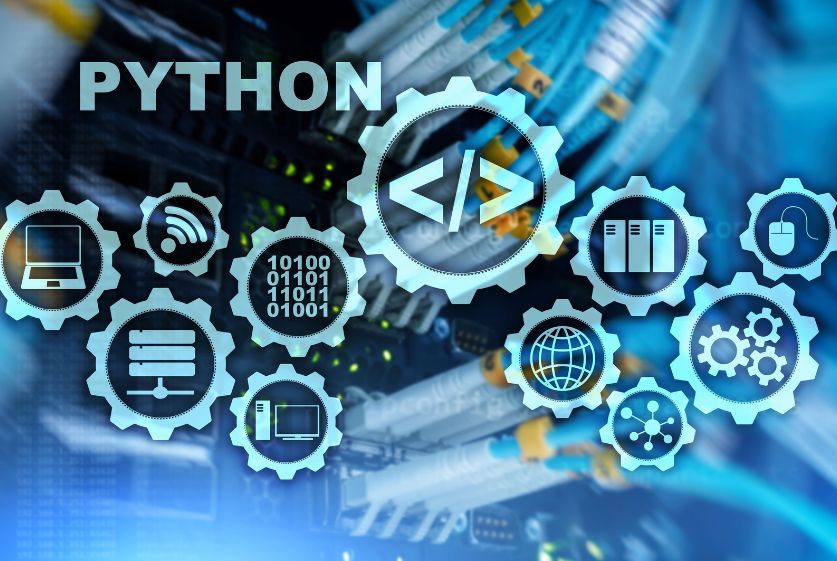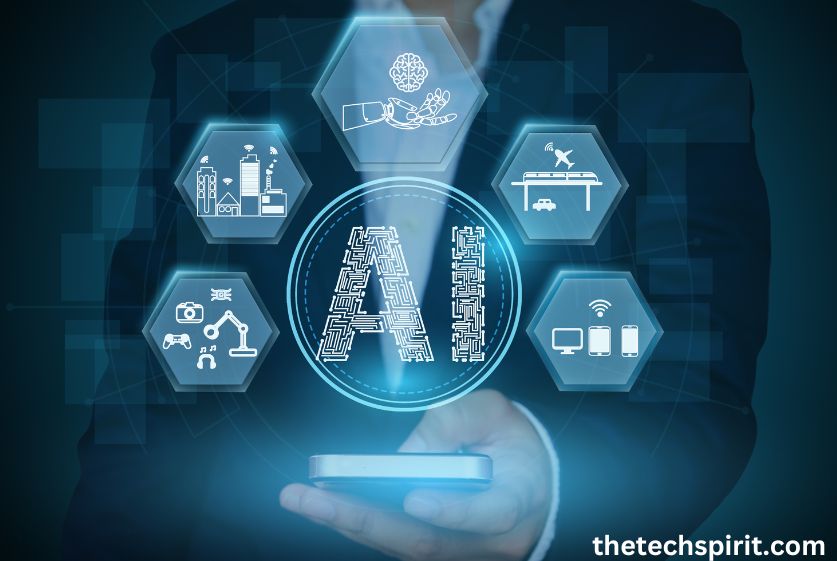Table of Contents
What is Artificial Intelligence (AI)?
Artificial Intelligence Analyst systems can learn from data, identify patterns, make predictions and decisions, understand language, see, hear, move objects, and more. The goal of AI is to create intelligent machines that extend human capabilities.
Some common examples of AI we see today include virtual assistants like Siri and Alexa, recommendations on Netflix and Amazon, self-driving cars, and tools for detecting fraud or diagnosing medical conditions. AI is becoming integrated into more aspects of our lives.
Brief History of AI
The foundation for artificial intelligence was laid back in the 1950s when scientists like John McCarthy started envisioning the possibility of replicating human-level intelligence in machines.
In the decades since AI has gone through boom and bust cycles of optimism and disappointment known as “AI winters.” With access to vast amounts of data and increased computing power starting in the 2000s, the capabilities of AI systems have accelerated rapidly.

Milestones like IBM’s chess-playing computer Deep Blue beating world champion Garry Kasparov in 1997 and breakthroughs in machine learning techniques like deep learning sparked new levels of investment and enthusiasm for AI.
Today, AI has permeated many industries and aspects of society, powering technologies like digital assistants, facial recognition, autonomous vehicles, predictive analytics in healthcare, and much more. Many experts believe AI will continue revolutionizing how we live and work.
Increased attention is also being paid to researching and addressing the longer-term implications of advanced AI.
Current State of AI
In recent years, AI has become mainstream – powering popular consumer apps and services as well as showing major promise for business and scientific applications. Most current AI systems are considered narrow or weak AI, focused on specific tasks like object recognition, speech transcription, strategic game playing, etc.
Strong or general AI capable of performing intellectual tasks across many domains at human levels remains on the horizon but is still a ways off. Key challenges include continuing to improve areas like reasoning, creativity, learning, and interaction, and designing frameworks for aligning advanced AI systems with human values and priorities.
Significant technical barriers also remain when it comes to robustness, lack of transparency, bias, and ensuring data privacy. Ongoing research across academia, nonprofits, and the private sector continues advancing the field rapidly.
Overall there is optimism about the transformative potential of AI while acknowledging and mitigating risks related to economic displacement, inequality, and global security.
Role of an Artificial Intelligence Analyst
Artificial Intelligence analysts are professionals who enable organizations to implement AI solutions, oversee their operations, and help maximize their business value. Some key responsibilities include:
Responsibilities of an AI Analyst
As an Artificial Intelligence analyst, your core responsibilities span the full machine learning pipeline – from data preparation to model deployment and monitoring.

Data Collection and Preparation
- Work with stakeholders like IT and business teams to identify, collect, and consolidate relevant datasets required for training AI models
- Clean, preprocess, and label datasets to remove errors, handle missing values, and transform data into the format required for model development
- Select subsets of quality data and engineer features that best capture patterns meaningful to the problem statement
Model Development
- Experiment with various machine learning algorithms and parameters to train optimal models that accurately make predictions/decisions based on the input data
- Perform hyperparameter tuning, cross-validation, regularization, etc. to optimize model performance and prevent overfitting on limited data
Model Evaluation and Improvement
- Conduct testing to evaluate the real-world performance of models using key metrics like accuracy, AUC-ROC curve, precision & recall, etc.
- Monitor models in production to check for data drifts and drops in predictive quality over time
- Retrain models on new data to continually enhance and keep them relevant to evolving business environments
In addition to these core responsibilities, Artificial Intelligence analysts collaborate with various internal teams and also keep up-to-date on advances in AI research and tools.
Skills Needed for an Artificial Intelligence Analyst
To be successful as an Artificial Intelligence analyst, some key technical and soft skills are required:
Technical Skills
- Proficiency in programming languages like Python and R used for data analysis/machine learning
- Understanding of math concepts like statistics, linear algebra, and calculus
- Knowledge of Machine Learning approaches like classification, regression, clustering, neural networks, etc.
- Experience with data visualization, manipulation, and modeling tools/libraries
- Cloud platform skills to leverage services like EC2, and S3 for scalable model building
Soft Skills
- Communication skills to elicit requirements from business users and explain technical concepts clearly
- Analytical thinking to draw insights from data/metrics and guide optimal model selection
- Creativity and curiosity to explore diverse data perspectives and experiment with different techniques
- Teamwork and collaboration skills to deliver AI projects aligned with business objectives
- Focus on continuous learning to keep up with the latest advancements in AI
Educational Background
There are a few common educational backgrounds seen among Artificial Intelligence analysts:
Bachelor’s Degree
- B.S. or B.A. degrees in Computer Science, Software Engineering, Applied Math, Statistics, Computational Finance, etc.
Master’s Degree
- M.S. in Computer Science, Analytics, Computational Statistics, Financial Engineering, etc.
Certifications
- Machine learning courses/certifications (e.g. through Coursera, edX) to gain specialized applied skills
- Vendor-specific cloud computing certifications (e.g. AWS, GCP)
Hands-on experience carrying out projects, internships, or research complements formal education for aspiring Artificial Intelligence analysts. Understanding industry domains like healthcare, finance, and retail is also valuable.
Steps to Become an Artificial Intelligence Analyst
If you’re interested in transitioning into a career in Artificial Intelligence analysis, here are some key steps:
Learn Programming Languages Like Python and R
Get proficient with essential programming languages like Python and R that underpin most data analysis and machine learning work today. Take online courses, work through programming exercises & challenges on sites like Hacker Rank, and undertake personal data projects to hone these skills.

Understand AI and Machine Learning Concepts
Develop a strong grasp of essential AI/ML algorithms like linear & logistic regression, decision trees, K-means clustering, neural networks, dimensionality reduction techniques, etc. Learn how to select the right technique based on the problem objective and data characteristics.
Build a Portfolio of AI Projects
Leverage available datasets/tools to undertake sample machine learning projects demonstrating core skills – from exploratory data analysis, data cleaning & visualization to model development & evaluation.
Academic Projects
Undertake supervised Machine Learning projects as part of college curriculum across domains like sentiment analysis, predictive analytics, etc.
Independent Projects
Explore Kaggle-style AI competitions or create independent Machine Learning prototypes focused on topics that interest you.
Kaggle Competitions
Compete against data scientists globally by developing high-accuracy models for real-world problems posed on platforms like Kaggle.
Get Some Experience With Internships or Entry-Level Roles
Apply learnings to deliver Machine Learning solutions tailored to business contexts through internships or associate/junior-level full-time roles. This hands-on experience dealing with messy real-world data and models prepares you for advanced Artificial Intelligence analyst positions.
Career Growth and Path for an AI Analyst
The career path for an Artificial Intelligence analyst can progress across various seniority levels:
Entry-Level AI Analyst
Focus on data preparation, prototyping, testing, and documenting AI models; work is supervised by more experienced data scientists.
AI Analyst
Take end-to-end ownership of developing and deploying AI solutions; interact with business teams to identify opportunities where Machine Learning can add value.
Senior AI Analyst
Guide large-scale enterprise AI strategies; lead cross-functional squads to deliver complex Machine Learning solutions and maximize ROI.
Lead AI Analyst
Set the AI vision for the organization; build, manage, and mentor teams of data scientists and analysts; drive AI governance and ethics.
Head of AI
Oversee the entire AI function encompassing data, infrastructure, models, applications, and research; accountability for AI returns across the business.
With specialized skills and experience delivering AI-driven innovation and results, numerous career growth avenues open up in this emerging field.
Future of AI Analysts
As AI becomes further embedded into business operations and strategic decisions, several key trends shape the future for Artificial Intelligence analysts:
Increasing Demand for AI Experts
Most companies are still early on their AI maturity curve. As AI ambitions grow more mainstream across industries, demand for AI skills will surge – presenting tremendous opportunities for qualified analysts.

Advances in AI Will Bring New Opportunities
Rapid technology advances are expanding the frontiers of AI – enabling new applications powered by evolutions in computing like quantum, bioinspired, and neuromorphic systems. Analysts who stay on top of innovations can capitalize.
Focus on Ethics and Governance
Ethical development and the use of AI is a rising imperative. Analysts with interdisciplinary expertise spanning technology, humanities, and social sciences to inform AI governance will become more valuable.
Conclusion
The role of Artificial Intelligence analysts is fast gaining prominence driven by AI’s pervasive adoption. As organizations rely more on intelligent algorithms and models to guide decisions and performance, skilled Artificial Intelligence analysts will be in huge demand.
For individuals interested in crossing over into this space, honing analytical and technical machine learning skills along with hands-on portfolio projects is key to positioning oneself for AI analyst career opportunities on the rise.
FAQs
What is the average salary for an AI analyst?
According to Glassdoor, the average base pay for an AI analyst in the US is $96,447 per year, with salaries ranging from $59,000 for entry-level positions to $155,000 for lead/principal AI analyst roles depending on skills and experience.
What industries employ AI analysts?
AI analyst roles span diverse industries from tech and financial services to healthcare, retail, advertising, automotive, and more. Any industry that leverages data to solve business challenges is integrating AI and hiring analysts.
What tools do AI analysts use?
Common tools include Python & R for programming, Jupiter notebooks for development, Tensorflow & Porch for building neural networks, Tableau & Power BI for data visualization, and AWS, GCP, and Azure for cloud-based model training/deployment.
How can I switch my career to become an AI analyst?
For those looking to transition into an AI analyst career, upskilling through specialized master programs, certifications, or self-paced online courses in machine learning and AI can help you obtain the required skills. Having hands-on ML project experience is vital.
What is the job outlook for AI analysts?
The job growth forecasts for AI analysts & scientists stand at about 28% between 2020-2030, over 3X the national average for all occupations (per Bureau of Labor Statistics). The exploding uptake of AI across diverse sectors promises an exciting outlook!









